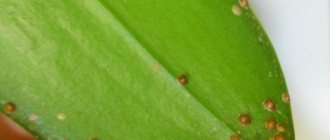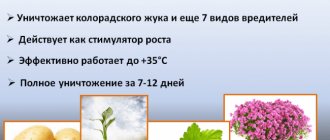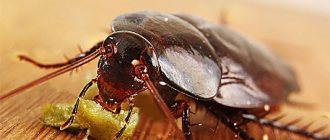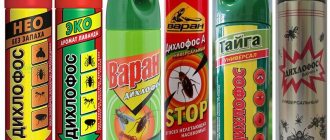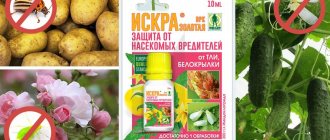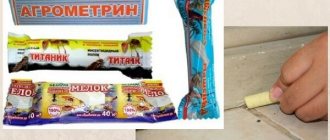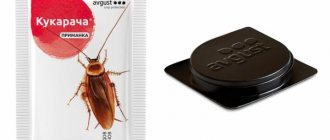Purpose of the drug Muhoed
If there is a small amount of midges in a flower pot, they will not cause dangerous harm to the crop. However, insects are capable of breeding in a short period of time.
As a result, their large numbers can cause serious damage to the plant:
- the flower gradually begins to wither and eventually dies as insects feed on its sap;
- black midges often feed on flower roots, actively eating them, as a result the crop dies, since deformed roots are difficult to cure;
- Insects cannot bring danger to humans, but they spoil the aesthetic appearance of the room.
Houseplants are regularly attacked by insect pests. However, it becomes easier to fight them every year as new and more effective drugs appear.
The fly beetle for indoor plants is especially popular among flower growers. The instructions for using the product make it possible to correctly calculate and add the required dose of the insecticidal composition to the pot.
The fly eater is considered a systemic intestinal-contact agent. It is often used to destroy onion and cabbage flies, wireworms, mole crickets, furrowed weevils and soil midges. In this case, the composition is capable of destroying larvae and adults.
To a greater extent, the product is used to protect indoor plants from soil parasites.
The popularity of the insecticide is due to the fact that it is enough to carry out one procedure to completely get rid of pests. During the season, you will need to apply the composition to the soil cover once, protecting decorative flower crops.
The active component of the drug, penetrating the parasite’s body, kills it. At the same time, it can destroy the larvae that are in the soil layer. After 3 days from the moment the insects come into contact with the insecticidal preparation, they die. In this case, the product does not accumulate in the soil layer.
News:
A product for controlling soil pests of cabbage, onions and potted and flower plants.Active ingredient: diazinon, at a concentration of 40 g/kg.
Manufacturers:
The only manufacturer in Russia is JSC.
Release form:
G - granules (dry brown granules with a specific odor). Produced in packages of 10 g, 25 g (package).
Purpose:
A product for controlling soil pests of cabbage, onions and potted and flower plants. It is also used to protect indoor plants from soil flies, fungus gnats and other soil-dwelling pests.
- Destroys larvae and adult insects.
- The death of pests occurs within the first three days after treatment.
- Decomposes quickly and does not accumulate in the soil.
Mode of application:
| Culture | Pest | Consumption rate of the drug | Method, processing time, application features |
| Indoor plants and flowers in the open ground | Soil flies, fungus gnats, furrow weevil, etc. | 2-3 g/1 m2 | Application to the soil surface around plants followed by loosening |
| Cabbage | Cabbage fly | 40 g/10 m2 | Application to the soil surface in the area of the root collar with simultaneous loosening when planting seedlings |
| Onion | Onion fly | 50 g/10 m2 | Application to the soil surface during planting with subsequent loosening |
The frequency of treatments is 1 time per season. 2-3 g of the drug corresponds to 1-1.5 teaspoons.
Important:
For seedlings, the use of a fly beetle is unacceptable, as it can cause the death of seedlings, due to the fact that the fly beetle is a bait by its principle.
Hazard class: 3rd (moderately hazardous substance). Not phytotoxic. Toxic to fish, do not allow to enter water bodies.
This article was created based on the manufacturer's instructions; it is for informational purposes only and is not an advertisement.
From personal experience:
When flying individuals appear, add a small amount of granules to the loosened soil. Sometimes these granules become covered with mold; there is no need to remove them; they are an additional bait for fungus gnats and other flies.
The death of pests does not occur immediately, but after a period of time, from a month or more, depending on the degree of infestation.
Compared to the drug "Bazudin" (the active ingredient is the same), "Fly Eater" works better, since its granules act as bait, as a result there is no need to frequently add granules. In the soil, Muhoeda granules last longer than small Bazudina granules.
Forum thread about fungus gnats
https://www.firm-august.ru/lph/product/index.php?ID=1698
Share the link
back
The plant is sick
If you have problems with your plant, and you yourself cannot determine what’s wrong with it, you can always contact us for help on our flower forum.
Action of Flycatcher, advantages
The fly eater for indoor plants acts as a protector because it contains the main active ingredient called diazinon. Due to its aromatic properties, the drug is eaten by insects with a special appetite, which subsequently leads to their paralysis and the inability to move and reproduce.
After 3 days, the parasites die; other insects die after reaching the surface of the soil layer. Thanks to water, the granules located in the soil layer are completely dissolved, and then absorbed by the plant through the roots, getting into the tissues and juice of the crop.
Ways of penetration of the fly-eater drug for indoor plants into the body of pests.
Due to this, insects and rodents that eat the plant die in the future. It is necessary to use “Fly Eater” only once during the entire season, since it has a prolonged protective property.
The drug is characterized by the formation of plaque in the form of a fungus on the surface of granules. There is no need to get rid of it; on the contrary, it is worth leaving it, as this will help attract fungus gnats and other insects.
“Barguzin”, “Praktik”, “Sharp 600”, “Diazin Euro” and “Ricochet” are currently analogues of the “Mukhoed” composition. An improved version has been released - “Super Fly Eater”, which is capable of exterminating any type of flies.
The advantages of the product are described in the following list:
- does not accumulate in the soil layer and disintegrates over time;
- when used, there is a very low probability of resistance;
- is not a phytotoxic drug;
- will help destroy cutworm nests;
- the drug has a protective effect as an insecticide for 2 months;
- the composition is capable of destroying adults and larvae;
- 2 days after placing the granules in the soil layer, the pests begin to die.
Description and purpose of the drug
“Fly-eater” is a systemic Russian drug for the destruction of onion, cabbage and other flies, soil flies, mole crickets, and wireworms.
It contains an active chemical substance – diazinon, which has a detrimental effect on both adult insects and their larvae.
This insecticide is also used to treat garden and indoor flower crops.
The dry product in the form of granules is poured onto the surface of the soil, the flower beds, pots and soil are slightly loosened.
Thanks to the alluring aroma, flies willingly eat it. The powder affects the intestines of insects. Soon they lose their capacity to eat and reproduce. Within 3-5 days they die.
After water (irrigation, rain) falls on the poured granules, they dissolve and enter the tissues and sap of the plant through the root system. All pests, including rodents, that feed on the surface parts of the plant also receive poison through the intestines and die.
“Fly-eater” has a long-lasting protective effect and is used only once throughout the season.
Important!
Insecticide "Fly-eater" - does not accumulate in the soil and in vegetables!
In the list of insecticidal preparations, similar products include “Daizin Euro”, “Praktik”, “Barguzin”, they are also used to treat vegetable and flower crops.
“Fly Eater Super” is also popular among experienced vegetable growers; it is an improved version for exterminating all types of flies.
Flaws
Despite the fact that the fly-eater insecticidal agent is in great demand among gardeners because it has many advantages, there are some disadvantages that you need to be aware of. Due to the fact that the drug acts as a bait, you must act very carefully when using it. Otherwise, the seedlings may die.
During application of the composition, fungus may form on the surface of the soil layer. However, you should not get rid of it, since the fungus, on the contrary, only increases the effect of the product on insect pests. The granules are characterized by a pungent and unpleasant odor.
Instructions for use, doses for indoor plants
At the moment, 2000 species of insects are known, but the following representatives most often attack indoor plants:
- white midges;
- ground fleas;
- black midges.
When treating houseplants, it will be enough to evenly distribute the component over the surface of the soil layer, and then loosen it thoroughly.
From white midges (whiteflies, scale insects)
Visually, the white midge looks like an aphid. It feeds exclusively on plant sap and is usually located on stems and foliage. They are very active insects, making them very easy to spot.
The extermination of insects is a difficult task, since only adult individuals can be destroyed with insecticides. This is due to the fact that the larvae are very firmly attached to the foliage and it is almost impossible to wash them off with any solution. They have very low sensitivity to chemicals.
The drug “Fly-eater” should be used to combat white midges in accordance with the following points:
- The substance must be evenly distributed over the surface of the soil layer in the pot.
- Then, without damaging the root system, you should loosen the soil a little.
- The norm for 1 indoor plant is considered to be the amount of the drug equal to 1.5 tsp.
- The procedure should be carried out 2 times.
From black midges (sciarids)
Pests manifest themselves, as a rule, in the case of a large amount of organic fertilizer applied in the form of tea leaves. Black midges, which look like larvae, are very dangerous for indoor plants, since adult individuals do not cause any particular problems for the plant.
They are located in the ground layer and look like worms with a body length of up to 5 mm and a black dot on the head.
Method of using the drug for pest control:
- The preparation must be applied to the surface of the soil layer around the plant and then loosened.
- The amount of substance required to exterminate an insect varies within 3 g per m2.
- The procedure must be performed 1 time.
Insects with a special appetite absorb the drug due to the fragrant bait. Afterwards, they are deprived of the opportunity to move, reproduce and eat food. After 3 days, the pest dies, others die upon reaching the surface.
When the granules are placed in the soil layer, after irrigation they dissolve, and then are absorbed by the roots of the plant and spread along the stems and foliage. Insects that consume the crop die over time. The fly eater only needs to be used once per season due to the fact that it has a long-lasting protective effect.
From earthen fleas (fleas)
The earth flea is a dangerous pest for plants, especially flowers. Yellowish-brown midges, as a rule, are located on the surface of the soil layer or at the bottom of the pot, and can jump on the foliage. The insect's body size is no more than 1 mm, so it is not possible to notice them immediately, which can lead to the death of the indoor plant.
The fly eater should be used very carefully, keeping it away from children and animals, and only if the springtail colony has grown abundantly throughout the indoor plant.
To exterminate the earthen flea, you should follow these steps:
- The product must be spread over the surface of the soil layer in a thin layer.
- The insects will die after 3 hours.
- To speed up this process, it is recommended to mix the scattered granules with soil.
- The amount of the drug fluctuates around 2 g per m2.
Fly eater for soil pests (10 g): instructions for use and reviews
The fly-eater drug is a modern means for combating soil-borne pests of flowering plants, as well as vegetable crops. TO
The key advantage of the drug is that it allows you to destroy not only adult insects, but also their larvae.
The product allows you to effectively combat cabbage and onion flies, as well as soil flies.
Granular fly-eater against soil pests is applied to the beds during planting, followed by loosening the soil.
If flower plants are treated, the product is applied superficially and then embedded into the ground.
The fly eater received reviews as a product with a long protective period, non-toxic to plants and one that does not accumulate in the soil.
Also, the product does not destroy earthworms and does not cause the death of beneficial microorganisms.
The death of pests occurs very quickly - 2-3 days after the drug enters the insect’s body.
In the future, the protective property is maintained throughout the season without additional soil treatments.
Chemical properties
The main active ingredient in Flycatcher is diazinon. Its concentration in the granular preparation is 40 g/kg.
How does the product work?
Diazinon is a nerve agent insecticide. It blocks the normal transmission of nerve impulses and disrupts the functioning of the nervous system of pests. This leads to convulsive muscle activity, the development of paralysis and the death of insects.
Thanks to aromatic baits, the Fly Eating agent is actively eaten by pests. Once the poison enters the body, it begins to act almost immediately. The first deaths are observed after 2…3 days. Some pests die right in the ground, and some of them rise to the surface and die in the air.
After it rains or the plants are watered, the active substances that are included in the fly-eater drug will penetrate from the soil into the plant. When feeding on juice, insects will receive a lethal dose of poison and die within a few days.
| Culture | Pest | Consumption rate of the drug | Method, processing time, application features |
| Indoor plants and flowers in the open ground | Soil flies, fungus gnats, furrow weevil, etc. | 2-3 g/1 m2 | Application to the soil surface around plants followed by loosening |
| Cabbage | Cabbage fly | 40 g/10 m2 | Application to the soil surface in the area of the root collar with simultaneous loosening when planting seedlings |
| Onion | Onion fly | 50 g/10 m2 | Application to the soil surface during planting with subsequent loosening |
Instructions for use
Instructions for use of Muhoed provide several ways to use the drug:
- when planting tuberous plants and sowing seeds;
- treating the soil with granules at the time of planting;
- placing granules in the root holes of seedlings with subsequent pinning;
- scattering of granules followed by loosening of the soil.
The last method of using Flycatcher is the most common. Granules are scattered onto the surface to be treated at a rate of 25...50 g per 10 m2. After this, the soil is lightly loosened, which allows the preparation to be deepened into the soil.
This type of treatment is recommended to be performed either in the morning or in the evening in dry weather. After treatment, watering can be performed, but this is not necessary.
Precautionary measures
The instructions for the fly-eater against soil pests recommend applying it using rubber gloves.
During treatment, it is prohibited to drink, smoke, or eat. Following these simple rules will prevent diazinon poisoning.
Advantages
- sold ready for application to the soil;
- affects various pests;
- allows you to destroy both adults and larvae;
- quickly dissolves in moist soil;
- does not accumulate in the ground;
- non-toxic to treated plants;
- low cost per treatment;
- protective properties are maintained throughout the season.
When should plants be treated?
A fly eater for indoor plants must be used at the stage of planting the crop in a pot.
In this case, you must adhere to certain conditions:
- the room should be sunny, but there should be no draft;
- It is not recommended to irrigate the ground cover before starting treatment;
- It is advisable to carry out the procedure before 9:00 am or after 8:00 pm;
- The temperature in the room should not exceed 25 °C.
Fly eater is considered a fairly effective drug that can cope with any insect pests. To completely destroy parasites, one procedure per season is enough, namely when transplanting a crop into a pot. The product is harmless to soil microorganisms, animals and people.
Precautionary measures
When working with a toxic product, you must adhere to safety and caution measures. When adding granules to the soil layer, your hands must be protected with rubber gloves. The face with eyes must be protected with a special mask, which is equipped with a protective filter, or a respirator.
Precautions during processing and at the end of the procedure:
| At the stage of processing the soil cover, it is prohibited | Upon completion of the procedure it is necessary |
| Eat food or drink a drink | Change work things |
| Smoking | Wash your face and rinse your hands with a soapy solution based on water and laundry soap. |
| Talk or breathe through your mouth | Rinse your mouth |
If you do not follow safety precautions or depending on the individual characteristics of the body, the insecticide can provoke the appearance of mild symptoms of poisoning. For these purposes, you must immediately consult a doctor so that he can prescribe treatment.
Price
The cost of the insecticidal drug “Mukhoed” varies within 20 rubles. per package. You can purchase the product at any flower shop or specialized nursery that breeds indoor crops.
Houseplants are quite often susceptible to attack by insect pests. Whiteflies are most often found with black midges and ground fleas. To get rid of pests, an insecticidal preparation called “Fly-eater” is suitable. It is able to give one hundred percent results and protect potted crops for a long period of time.
Analogues of "Mukhoed"
Other pesticides have also been developed that also contain diazinon. The following drugs are used on private farms:
- "Barguzin"
- "Diazin Euro"
- "Ricochet",
- "Sharp 600"
- "Practitioner".
There is also an improved version of the Fly Eater Super, which is designed to kill all types of flies. It is sold in packs of 80 g (the cost of 1 pack is about 200 rubles). The drug provides quick and effective destruction of all flies.
